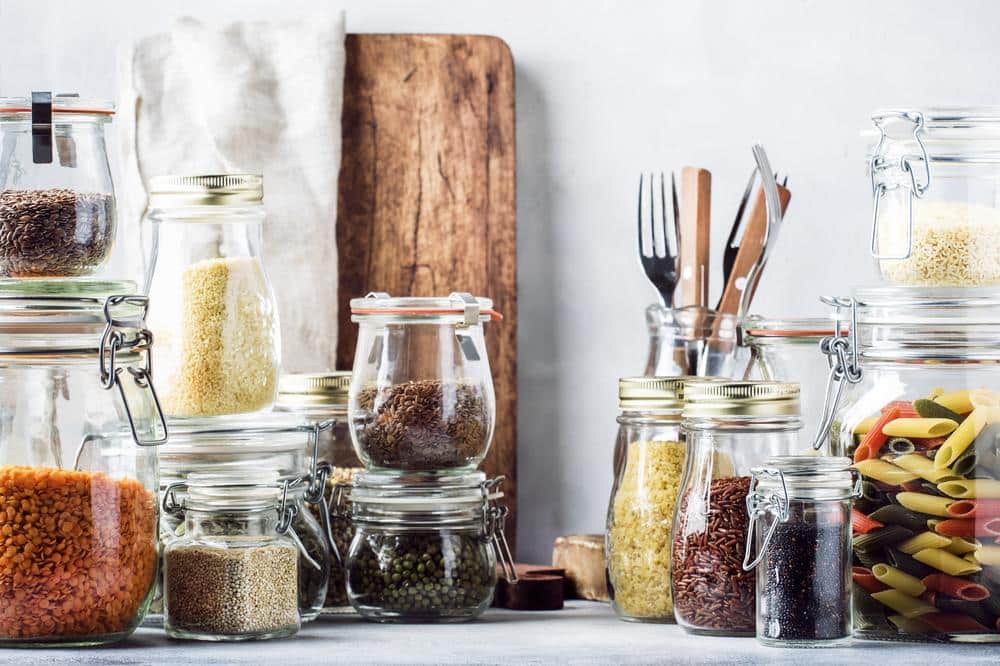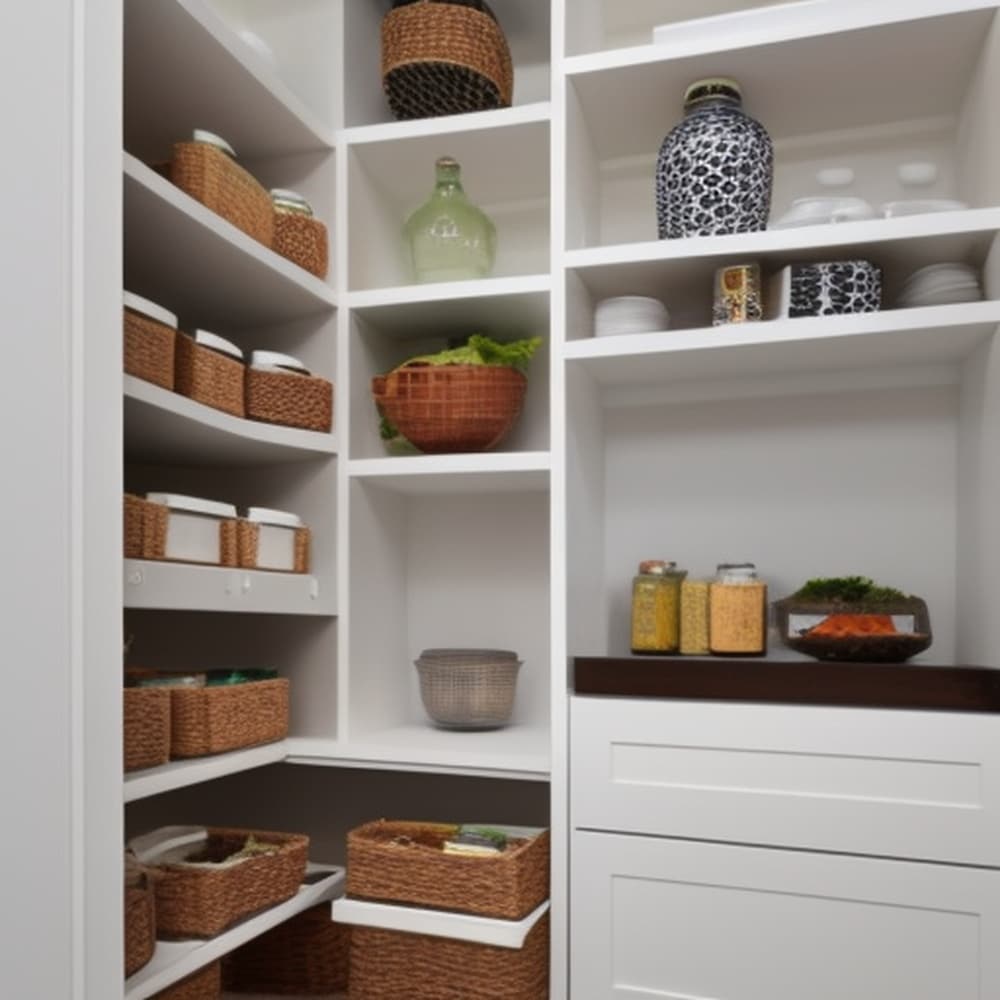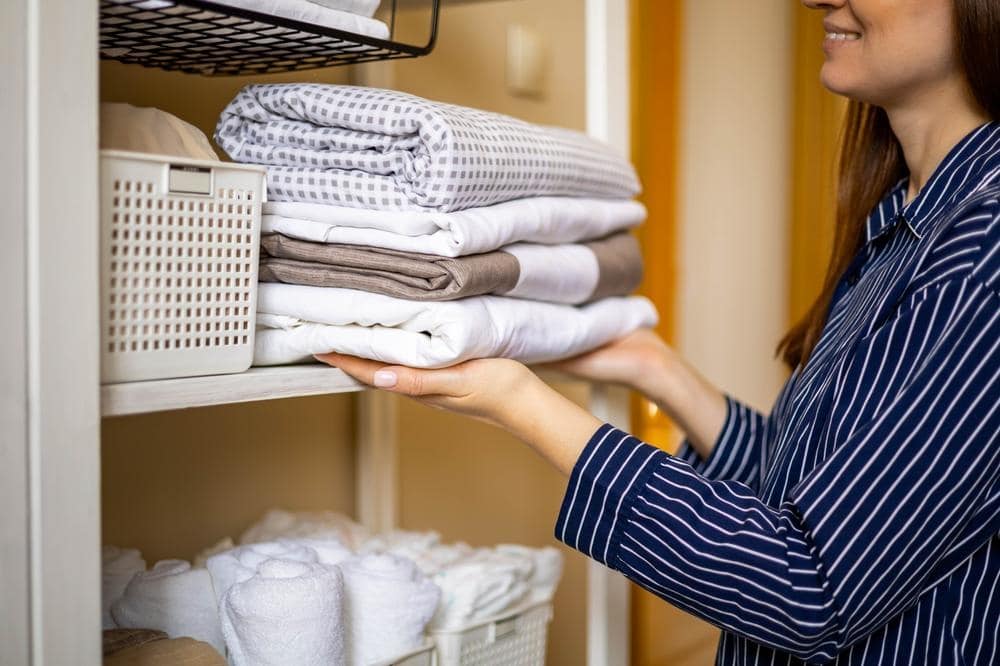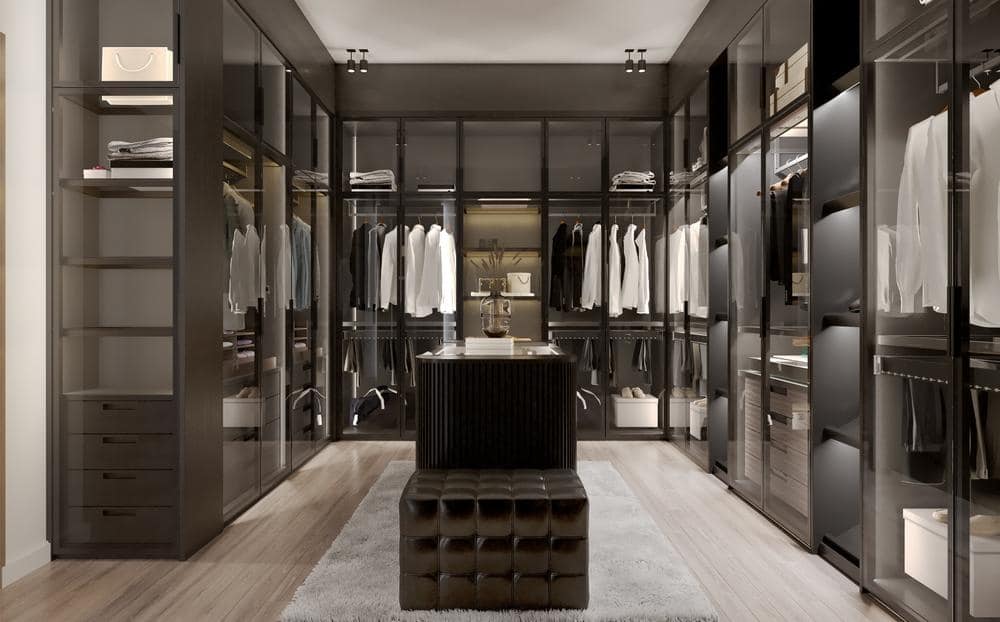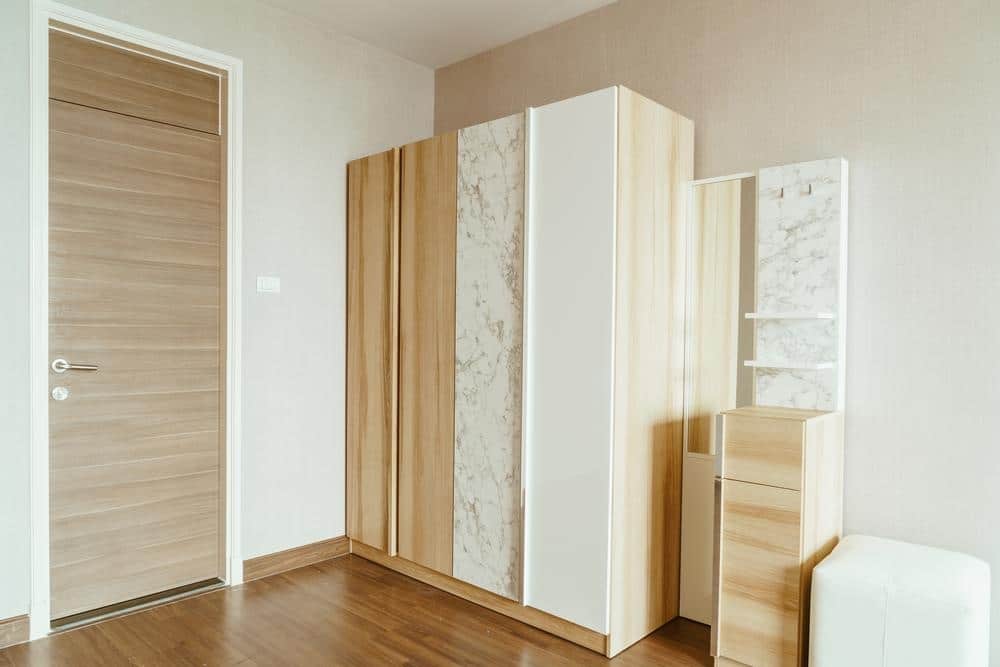When you first purchased your home, you believed that having pantries with deep shelves would be extremely useful. You’ve since realized that the depth of the shelves allows you to push some food items out of sight and out of mind, often until the food has long expired. You need to organize your pantry as soon as possible, but how? We looked at various sources to find the best pantry organization ideas!

For organizing a pantry with deep shelves, we recommend the following:
- Baskets should contain items that are similar in nature, such as breakfast foods or dinner foods.
- If the cereal boxes are too large, put them in dispensers.
- For oils and similar bottles, use slim storage bins.
- Keep a lazy susan or two for spices and small containers in the pantry.
- Purchase a standing can dispenser.
- Other items should be stored in stackable bins.
In this section, we’ll go over the tips mentioned above in greater detail so that your pantry can be the cleanest and most organized it has ever been. We’ll even go over how to deal with a massive five-pantry shelf. You will not want to miss it!

Pantry Organization Ideas With Deep Shelves
Table of Contents
- Pantry Organization Ideas With Deep Shelves
- Organize According To Size
- Add Drawers On Deep Shelves
- How Deep Should Pantry Shelves Be?
- How Far Can A Shelf Span Without Support?
- How Do You Organize A Five-Shelf Pantry?
- Store Appliances On Deep Pantry Shelves
- Don’t Be Tempted To Overload
- A Deep And Narrow Pantry
- Install a Pullout Pantry
- Utilize Tray Dividers
- How Do I Organıze Narrow And Deep Pantry Shelves?
- A Kitchen Without A Pantry
- Conclusion
- What do you do with deep pantry shelves?
- How do you style deep shelves?
- How do you organize pots and pans in a deep drawer?
- How do you organize a small pantry?
- How do you organize pantry so you can see everything?
- What should you not put in a pantry?
- What is the best way to organize your pantry?
- How does Marie Kondo organize pantry?
- How do you organize a stock pantry?
- What categories should I organize my pantry?
- What are the rules of the pantry?
- How many hours does it take to organize a pantry?
- Why is it important to organize your pantry?
- How do you organize a deep and wide pantry?
- How do I organize my pantry and fridge?
- How do you organize a high and deep pantry?
Pantry Use Baskets For Grouping Similar Items
The issue with deep pantry shelves is that you frequently stack food on top of food. Whatever food is at the bottom is likely to be forgotten, resulting in a waste of money.
If possible, set aside a shelf or drawer in your pantry for each meal, such as breakfast, lunch, dinner, and snacks. On the other hand, Baskets work just as well for this job.
Use baskets made of a transparent material that allows you to see what’s inside, such as mesh or clear plastic.
These basket organizers are a great choice on Amazon. With your order, you receive three large baskets stacked on top. The metal bars on the baskets make it simple to see what’s inside.

Put Items You Use Often Somewhere Easily Accessible
Why is the item you keep in the pantry the most accessible? Your family eats cereal, bread, or some other item daily. Is the pantry near the door or the cupboard where you keep your deep pantry? If so, put it there. Pick the shelf closest to the door if you have a walk-in pantry.

Organize According To Size
When organizing your deep shelves, make sure to put the larger items first. You can put the long boxes of pasta behind the shorter boxes or containers. This will make accessing everything on the shelf much easier without having to reposition anything. If you’re using bins or baskets to categorize your items, you can still organize them by size within each one.
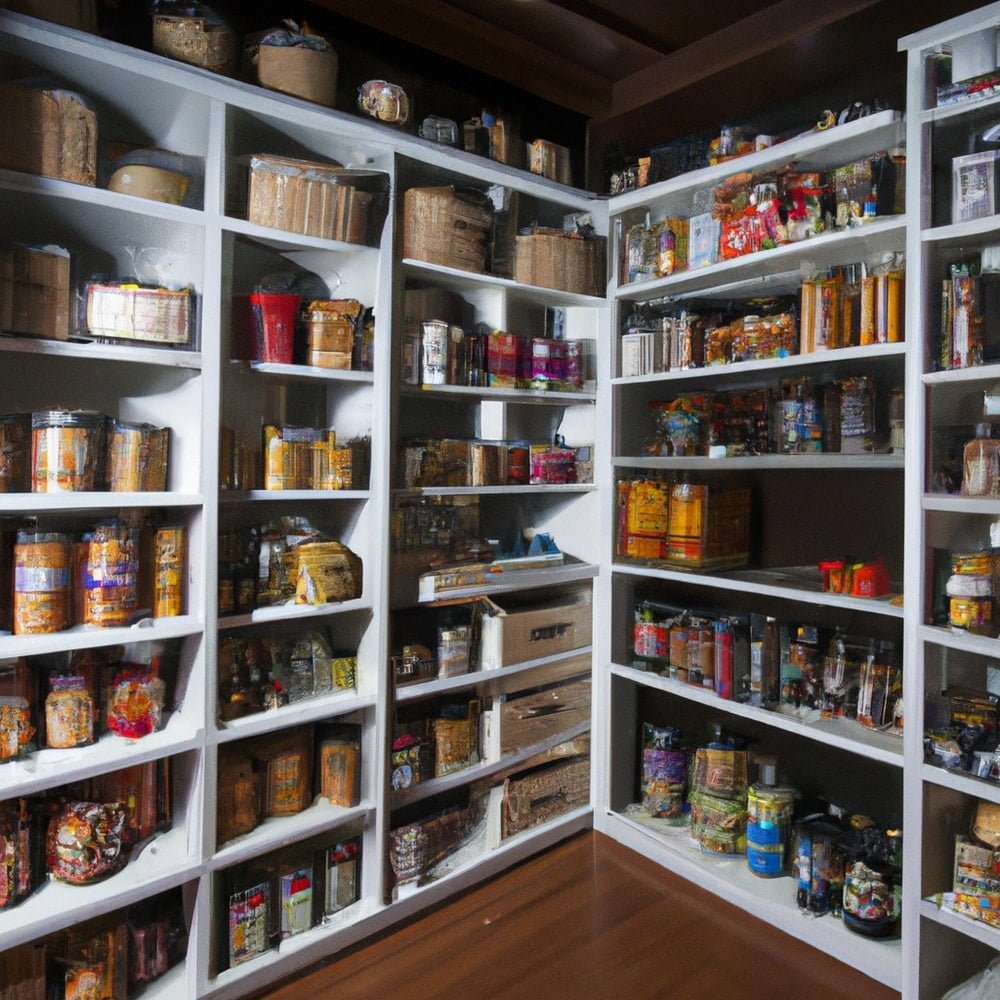
Switch Cereal Boxes To Dispensers
Your pantry shelves may be deep, but they aren’t always tall. If you frequently purchase family-sized cereal boxes for your children and spouse (and possibly yourself on occasion), cramming these boxes into the shelves will not work.
Cereal dispensers will make pantry organization a breeze. Each cereal dispenser generally holds 135.2 ounces and is made of BPA-free translucent plastic. You’ll also get eight labels to help you separate your Froot Loops from your Frosted Flakes.
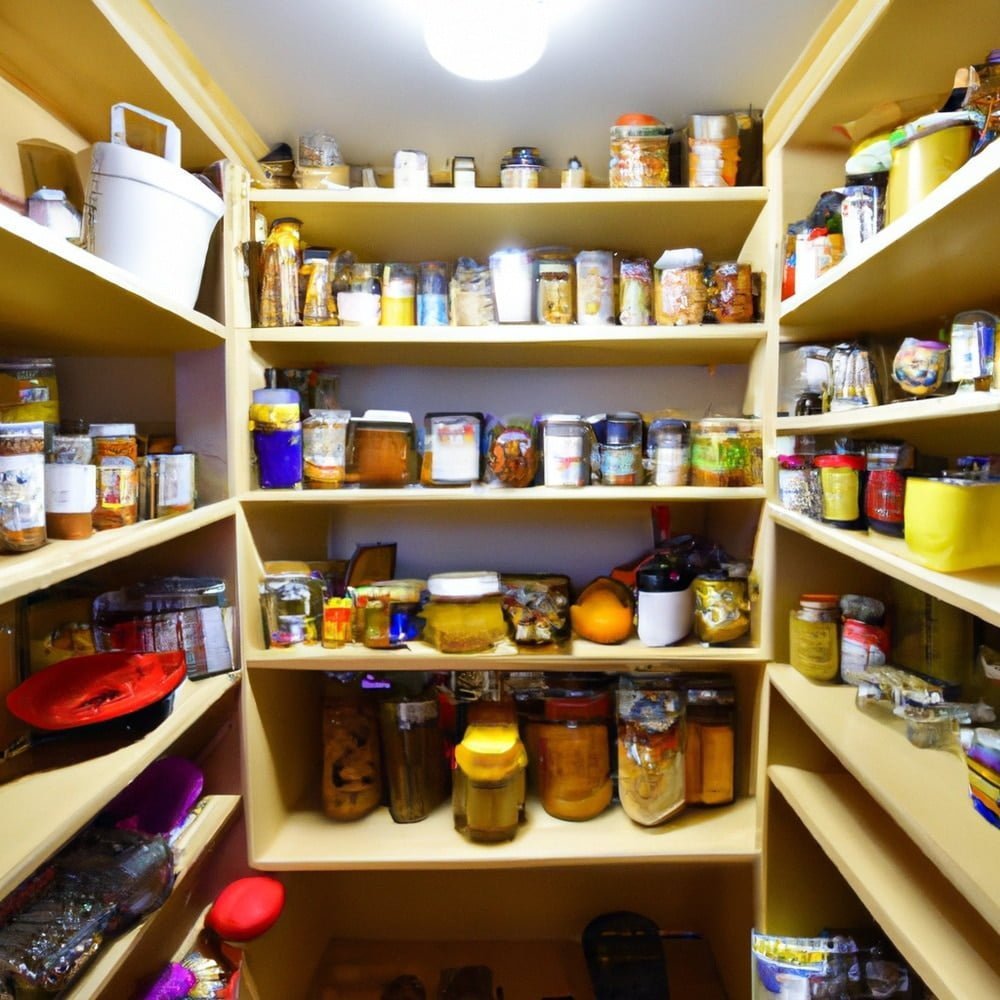
Slim Storage Bins Can Hold Bottles And Jars
Your pantry’s cool, dark environment is ideal for bottles and jars. That won’t matter if you never use the contents of your bottles because they’re hidden in the back of your deep pantry shelves.
Lazy Susans Organize Smaller Pantry Items
Do you have a collection of small bottles and containers for food items like sprinkles or spices? If so, you understand how difficult it is to keep these tiny containers in your deep pantry. The containers are easily moved and jammed into the shelf’s corner.
A lazy susan in your cabinet can assist you with this. Because this Copco organizer from Amazon is non-stick, you won’t have to worry about larger items pushing the lazy susan around in your cabinet. You should be able to fit your most important spices and similar items on two tiers.
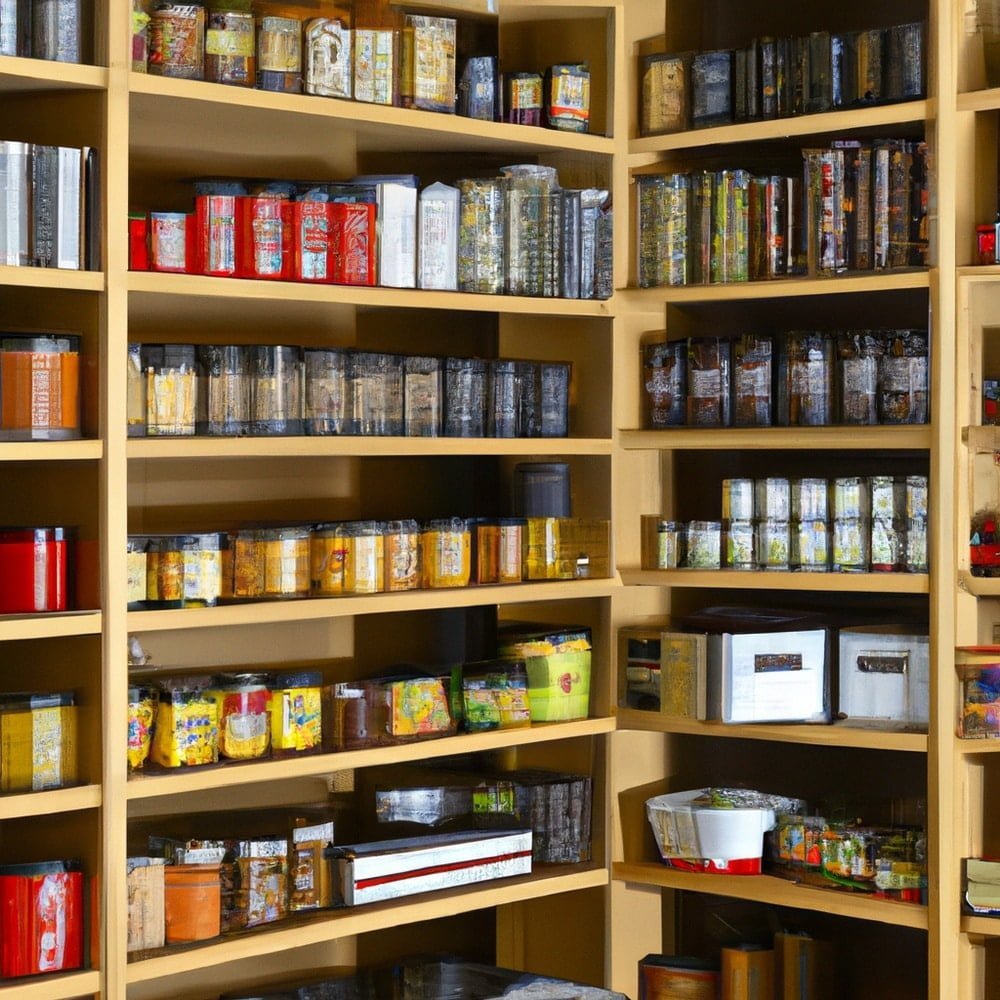
Use Standing Can Dispensers So Cans Hog Up Less Room
Canned food makes for a convenient meal or snack, but when you find a good deal at the grocery store and buy a bunch of canned goods, you may not have room for them in your cabinet.
Consider a standing can dispenser. You can purchase a four-pack to store cans of soup, soda, or other canned foods. Seven standard-sized cans can be stored in each dispenser.
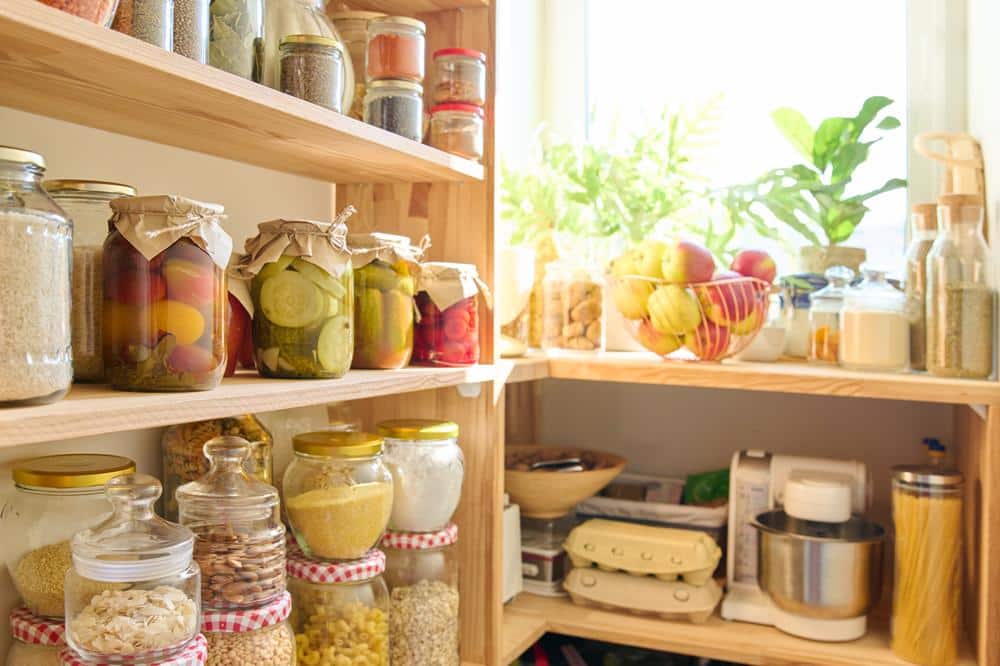
Add Drawers On Deep Shelves
Drawers are terrific for keeping things organized. You can pull out a drawer and get to everything instead of constantly shifting things around in the front to get to the back. You’ll save space on your shelf by using the vertical space often wasted by the drawers. I recommend placing a small set of wire or basket drawers in your pantry.
Get Bins That Stack
Stackable bins will also come in handy when organizing your deep-shelved pantry. You might want to arrange the containers so that all the product labels face outward. Also, get clear bins so you and your family can easily see what’s inside.

How Deep Should Pantry Shelves Be?
If you’re thinking about remodeling your kitchen to make more pantry space, you might wonder what the ideal pantry shelf depth is. The ideal depth for kitchen pantry shelves, according to a professional closet designer and builder who spoke with home resource Kitchn, is between 16 and 20 inches.
The depth should be reduced as the shelves get higher, with these shelves no deeper than 12 inches. You won’t have to climb on a stepstool and lean into your pantry to find what you’re looking for on the higher shelves this way. Food items will be more easily accessible.
In addition, the distance from your kitchen floor to the bottom of the lowest pantry shelf should be around 20 inches or even 24 inches if you have the space.
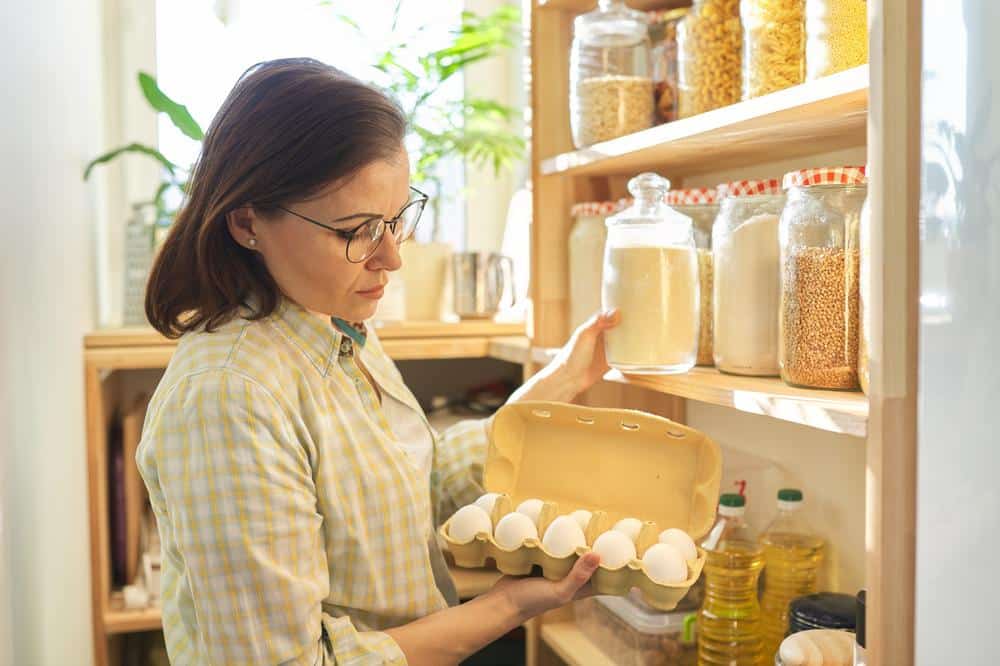
How Far Can A Shelf Span Without Support?
The shelf span is another factor to consider for your kitchen pantry project. To do so, you must first understand the shelf’s span limit. Are you unsure what a span limit is? Please allow us to explain.
The span limit is the maximum amount of space the shelving supports can occupy. When the span limit is correctly calculated, you can be confident that your deep kitchen pantry shelves can support the weight of the items placed on each shelf.
Not all span limits are created equal. Depending on the material used to construct your shelf, you may discover that this limit is higher or lower than you anticipated. Solid lumber shelves, for example, have a greater span limit than plywood, particleboard, and glass shelves.
Depending on the material used for your kitchen pantry shelves, the span limit could range from 18 inches at the very least to five feet and sometimes more at the very most.
How Do You Organize A Five-Shelf Pantry?
What if you have a massive pantry, such as one with five shelves? Each shelf is fairly deep, providing seemingly limitless food organization options. Nonetheless, the pantry has devolved into a shambles after several months. What can you do to clean it up again?
We recommend that you follow these helpful hints:
Start Fresh for Pantry Shelf Organizing
Begin by removing everything from all five shelves of your kitchen pantry. Sort the food into two piles: those that will be saved and those that will be discarded (either because it expired or no one eats it). Take advantage of the rare opportunity to clean the pantry from top to bottom.
Utilize Your Storage Options for Pantry Organizing
Storage solutions like a lazy susan, can dispensers, stackable organizers, and the like are ideal for your five-shelf kitchen pantry. Utilize as many of these organizational solutions as you require.
Create A Food Organization Hierarchy
Perhaps you should arrange the food so that the oldest food is at the bottom and the newest is on top, or vice versa. Maybe you’ll take our advice and use one pantry shelf for each meal, leaving the rest for snacks. Commit to keeping the shelves organized in the way that works best for you and your family in the future.
Check The Pantry Shelves Every Week
Your five-shelf kitchen pantry may be the cleanest it’s ever been, but it won’t last. As new foods are added to the pantry and old ones are removed, it’s critical to check what’s in there once a week and reorganize as needed.

Reserve Lower Shelves For Heavier Items
It is best to store heavy cookware, pots, pans, and excess food on deep pantry shelves, as the space between the top and the bottom allows cooks to access the heaviest items without the risk of potential accidents. Avoid reaching for items above your head wherever possible – they can be too heavy to manage.
Store Appliances On Deep Pantry Shelves
Minimalist kitchen countertops must be arranged carefully, particularly in today’s dual-purpose kitchen/dining areas. Fewer kitchen appliances on display maximize kitchen countertop organization. Conserve your important kitchen counter space by stowing away small appliances like kettles, toasters, and coffee machines in deep pantry shelves. The extra space will be a huge help for food preparation.

Don’t Be Tempted To Overload
Deep pantry shelves can accommodate a lot of ‘stuff’ because they are designed that way. It is tempting to fill the space – particularly if you are organizing a small kitchen – but it is not conducive to efficient storage overall. Stuffing many miscellaneous items on your pantry shelf may seem like an easy solution, but it’s not practical. Designate a space for the things you use often – like that non-stick frying pan. Giving it its own corner will do cooking with it much easier and faster when you need to quickly get dinner on the table!
A Deep And Narrow Pantry
Professional organizers frequently encounter deep pantry cupboards as one of the most frequent pantry problems. Further, they can often be a very challenging area to work in without blocking the view of the back of the cupboard. However, with simple and inexpensive pantry organizers, pantry spaces may be quickly transformed into highly functioning areas.
Install a Pullout Pantry
Installing a pullout pantry is an excellent pantry organization idea. It adds convenience and accessibility, allowing you to browse through pantry items at a glance easily. Not only that, but the pullout pantry also makes efficient use of space in your pantry, making more room for other household items and groceries. Investing in this handy organizational tool will add value to your home and make your daily cooking routine more effortless.
Utilize Tray Dividers
Tray dividers are a great pantry organization solution for those needing to store items in their pantry of varying sizes. They provide an aesthetically pleasing look and make it easier to find items quickly without having to rummage through a jumble of different-sized things. The trays can store pantry staples such as canned goods, snack foods, cereals, and spices.
Using tray dividers, you can significantly reduce pantry clutter and organize everything. Plus, you don’t have to worry about finding the right size box or container because these trays fit in standard pantries perfectly.
How Do I Organıze Narrow And Deep Pantry Shelves?
Narrow and deep pantry shelves should be reserved for smaller items so use transparent containers or baskets to group them. Before selecting pull-out storage, measure the height and width of the shelf to ensure you have a snug fit. To be sure you don’t leave empty space at the back, you must have a snug fit. Clearly label each container so you can retrieve what you need and put it back.
A Kitchen Without A Pantry

Kitchen cabinets may be utilized to create a pantry. Kitchen cupboards, in addition to storing food, can also serve as a pantry. Breakfast cereals and tea/coffee supplies may be stored in overhead cupboards, while heavier goods can be stored under bench cupboards. Drawers are excellent storage spaces for canned goods, dry goods, and spices. The fridge may store condiments, spreads, sauces, and marinades. A butcher’s block or other types of small cart may provide storage space. Use your wall space to make the most of your kitchen’s limited space. For example, open shelving for dry goods is both functional and classy.
Conclusion
Many homeowners wish they had a large and deep kitchen pantry, but without proper organization, your pantries can quickly become overwhelming. Your kitchen will be much less cluttered now that you know how to organize a deep-shelved pantry.
What do you do with deep pantry shelves?
Deep pantry shelves are ideal for storing large items, such as cookware and appliances. The space between the top of the pantry shelving unit and to bottom allows you easy access inside heavy goods while reducing the risk of potential accidents with other foodstuffs on the shelf
How do you style deep shelves?
If you want your bookcase to be more than just a storage device, then lean it against the wall and add layers to the artwork. For an even deeper look, put some nice pieces near its front for contrast!
How do you organize pots and pans in a deep drawer?
Keep your pots and pans organized by stashing them in a tension rod near the front of any large drawer. This will allow you to slide lids vertically between them, keeping space free for other items while still making sure they’re easily accessible when needed!
How do you organize a small pantry?
Organizing a small pantry can be challenging, but it doesn’t have to be overwhelming. Here are some tips to help you get started:
- Start by taking everything out of the pantry and wiping down the walls, shelving, and containers. This will help keep your organized space looking fresh and eliminate any crumbs that could cause pests in your pantry.
- Assess what food items you store in the pantry regularly and determine categories for storage, such as snack foods, grains, canned goods, baking supplies, etc.
- Utilize baskets or bins to store like items together so they can easily be retrieved when needed – this helps create more efficient use of space without having lots of smaller items mixed up or hard-to-reach corners filled with clutter that is impossible to clean out later on. If possible, try using clear containers to see what’s inside without having to remove them from their position first.
How do you organize pantry so you can see everything?
Organizing your pantry can be a time-consuming task, but with just a few simple steps, you can quickly create an efficient and well-organized space full of items you’ll actually be able to find.
Take everything out of your pantry and clean it, wiping down the shelves and ensuring all crumbs or other debris are removed. This will give you a fresh start and help ensure any organization efforts won’t be hindered by outdated clutter. From there, group items such as canned goods, baking supplies, dried pasta & grains, snacks, etc. Taking inventory of what each grouping contains will also help determine what kind of storage solution is needed for each one.
What should you not put in a pantry?
Generally, it is best to avoid putting any food items in your pantry that require refrigeration. This includes dairy products such as milk, cheese, yogurt, and butter; deli meats; eggs; any prepared dishes (like lasagna or macaroni salad); or raw meat and poultry. These foods should always be stored in the fridge due to their high moisture content, which increases the risk of spoiling quickly at room temperature.
What is the best way to organize your pantry?
The best way to organize your pantry involves the following steps:
- Declutter: Remove all items from your pantry and sort them into categories like “keep,” “donate,” or “discard.” Check expiration dates and discard any expired products.
- Categorize: Group pantry items by type, such as canned goods, baking supplies, snacks, spices, and beverages.
- Plan your layout: Designate specific shelves or areas for each category, placing frequently used items within easy reach and less frequently used items on higher shelves or in less accessible areas.
- Use appropriate storage solutions: Opt for clear bins, baskets, or containers to store and display items in an organized manner. Consider using airtight containers for dry goods to maintain freshness and prevent spills.
- Label containers: Clearly label bins, baskets, or containers to easily identify contents and encourage consistent organization.
- Maintain organization: Regularly declutter, restock, and reorganize your pantry to keep it tidy and functional.
How does Marie Kondo organize pantry?
Marie Kondo recommends organizing the pantry by following these principles:
- Declutter and discard items that no longer spark joy or serve a purpose.
- Store items in clear, airtight containers to maintain freshness and visibility.
- Use boxes or bins to group similar items together.
- Arrange items vertically, so everything is visible at a glance and easy to access.
- Label containers and shelves to maintain consistent organization.
- Keep the pantry tidy by regularly decluttering and reorganizing.
How do you organize a stock pantry?
To organize a stock pantry:
- Remove all items and declutter, discarding expired or unneeded products.
- Categorize items by type, such as canned goods, grains, pasta, and beverages.
- Use sturdy shelving to accommodate the weight of bulk items and create a designated area for each category.
- Store items in their original packaging or transfer them to clear, labeled containers.
- Practice the FIFO (First In, First Out) method, placing older items in front and newer items behind to ensure proper rotation and minimize waste.
- Regularly inventory your stock pantry to maintain organization and avoid overstocking.
What categories should I organize my pantry?
Consider organizing your pantry into the following categories:
- Canned goods and jarred items
- Baking supplies
- Grains and pasta
- Snacks and treats
- Spices and seasonings
- Condiments and sauces
- Beverages
- Breakfast items
- Paper goods and disposable products
- Pet supplies (if applicable)
What are the rules of the pantry?
Rules for maintaining an organized pantry include:
- Regularly declutter and discard expired or unneeded items.
- Categorize and store items by type for easy navigation.
- Label containers and shelves for consistent organization.
- Practice the FIFO (First In, First Out) method to ensure proper rotation of items.
- Keep the pantry clean and well-maintained to prevent pests and maintain food safety.
- Monitor inventory levels to avoid overstocking and ensure efficient use of space.
How many hours does it take to organize a pantry?
The time it takes to organize a pantry varies depending on factors such as the size of the pantry, the number of items, and the level of organization required. On average, it can take anywhere from 2 to 6 hours to declutter, categorize, and reorganize a pantry. However, this time investment can significantly improve the pantry’s functionality and ease of use.
Why is it important to organize your pantry?
Organizing your pantry is important for several reasons:
- Improved efficiency: A well-organized pantry makes it easier to locate items quickly and reduces the time spent searching for ingredients.
- Food safety: Regularly decluttering and organizing your pantry helps prevent food spoilage and ensures you discard expired items.
- Cost savings: An organized pantry allows you to monitor inventory levels, reducing the likelihood of overbuying or wasting food.
- Aesthetics: A tidy, well-organized pantry is visually appealing and contributes to a more pleasant kitchen environment.
- Stress reduction: Maintaining an organized pantry simplifies meal planning and preparation, reducing stress and frustration in the kitchen.
How do you organize a deep and wide pantry?
To organize a deep and wide pantry:
- Use pull-out shelves or drawers to make items more accessible and prevent them from getting lost in the back of the pantry.
- Install tiered shelving or shelf risers to improve visibility and maximize vertical storage space.
- Utilize clear, labeled bins or baskets to group similar items together and prevent them from becoming disorganized.
- Consider installing a lazy Susan in corner areas to optimize storage and accessibility.
- Organize items by category, placing frequently used items within easy reach and less frequently used items in less accessible areas.
How do I organize my pantry and fridge?
To organize your pantry and fridge:
- Declutter both spaces, removing expired or unneeded items.
- Categorize items by type, such as dairy, produce, condiments, snacks, and beverages.
- Use clear, labeled containers or bins to store items neatly and maintain organization.
- Store items at the appropriate temperature, with perishables in the fridge and non-perishables in the pantry.
- Practice the FIFO (First In, First Out) method to ensure proper rotation of items and minimize waste.
- Regularly clean and reorganize both spaces to maintain cleanliness and functionality.
How do you organize a high and deep pantry?
To organize a high and deep pantry:
- Use a step stool or ladder to safely access high shelves.
- Install pull-out shelves, drawers, or sliding baskets to improve accessibility in deep areas.
- Utilize tiered shelving or shelf risers to maximize vertical storage space and enhance visibility.
- Store less frequently used items on higher shelves and more frequently used items within easy reach.
- Organize items by category, using clear, labeled containers or bins to maintain organization and prevent clutter.
How Do You Organize High Deep Pantry Shelves?
Organizing high deep pantry shelves can be a challenge due to the difficulty in reaching and seeing items. To optimize this space, store seldom-used items or bulk purchases that you don’t need to access frequently. Consider using clear bins or baskets to group similar items together, making it easier to pull down a whole bin instead of individual items. You might also consider installing pull-out storage or using a step stool for easier access.
How Do You Organize Deep Closet Shelves?
To organize deep closet shelves, start by categorizing your items and storing similar items together. Use bins with handles or sliding drawers for easy access to items at the back of the shelf. Stackable clear bins can be an excellent choice for clothing or accessories. For higher shelves, store less frequently used or seasonal items. It’s always helpful to keep the items you use most often at eye level and within easy reach.
How Do I Maximize Deep Shelves in My Kitchen?
To maximize deep shelves in your kitchen, use turntables or lazy Susans for easy access to items at the back. Install sliding drawers or pull-out organizers to utilize the full depth of the shelves. Store taller items at the back and shorter ones in the front so everything is visible at a glance. Using clear containers for food items can also help you quickly identify what you have.
How Deep Can Pantry Shelves Be?
Pantry shelves can be as deep as you want, but a common measurement is between 16 to 20 inches. This depth provides ample storage while still allowing you to see and reach items at the back of the shelf. However, for very deep shelves, consider using pull-out storage options to maximize accessibility and efficiency.
What is the Best Use of Deep Pantry Shelves?
The best use of deep pantry shelves is for storing bulk items or appliances that aren’t used daily. Staggering products, with taller items in the back and shorter ones in the front, helps improve visibility. It’s also beneficial to use storage aids like turntables, clear bins, and pull-out organizers to maximize space and convenience. Always remember to rotate your stock, placing newer items at the back and moving older ones to the front to ensure they get used before their expiration dates.

At Bienal Closets, we are on a mission to bring quality closet to every household in America. As professional closet organizers, we strive to bring quality, organization, and comfort to your space.
Our closets are manufactured in America & Europe as our way of adding value to the economy, create jobs, save costs, and maintain high standards of production.
